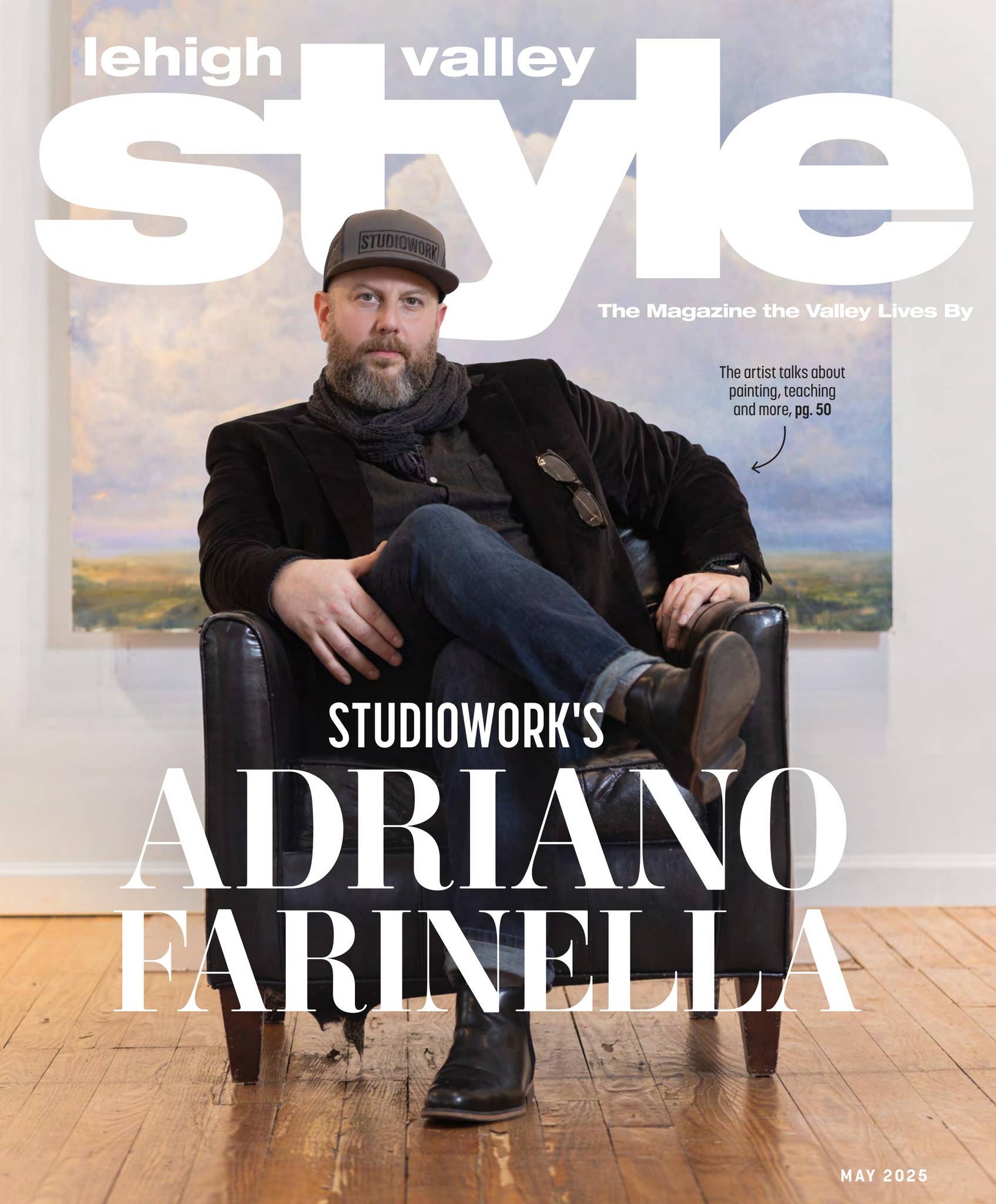These lustrous and often complex works of art tie a room together while adding luxury and comfort to our homes. Hear from co-owner Kevin Ward of Ward's Oriental Rug Service and Gallery in Allentown for the last word on choosing, maintaining and storing the best and most beautiful area rugs.
The Wonders of Wool
The best material for a rug overall is durable, flame-retardant wool. “If a coal jumps from the fireplace onto your wool rug,” Ward says, “it will go out.” It can be scrubbed and flooded with water to rinse out dirt. “Customers bring in grandma's rug that hasn't been washed in 40 years,” he says, “and it comes back looking almost new.”
Machine-made rugs, compared with the hand-knotted wool creations from countries like India and Pakistan, often use nylon or polypropylene, which doesn't stain easily, but gets scratched. The colors can gray permanently and lose their luster with wear because of this damage to the fibers. Though perfectly serviceable, no machine-made rug will last or hold value like a hand-knotted rug, so if you want a beautiful investment that will carry resale value through generations, it's not the machine-made carpet.
Buyer's Rugmorse
“So many customers come in and say, ‘This carpet belonged to the Prince of Iran,'” Ward says. “Did it now? Because that rug is from Pakistan.” Unscrupulous dealers and advancements in replicating authentic rugs make buying carpet like shopping for a diamond. All but the expert can be easily duped.
At Ward's, Kevin and his father, Gary, have curated an inventory of hundreds of rugs with encyclopedic knowledge of the history and craft of the carpet. The average room-size oriental rug costs between $4,000 and $5,000, but they sell beautiful pieces for $200 or even $35, and if you find a potential masterpiece somewhere else, they're happy to evaluate it for you.
“Someone brought in a rug from a dumpster outside a frat house,” Ward recalls. “It was so dirty. After we soaked and washed it, it was a 100-year-old Persian carpet and sold for $1,000.”
Va-Va-Vacuum
The vacuum is your carpet's best friend. Bits of soil, dirt and grit from shoes sift down to a rug's foundation and can grind away at the soft wool as the carpet is walked on. This is what renders rugs threadbare. Vacuum twice a week and give attention even to rugs with no traffic; wool has a way of attracting dulling dust.
Ward recommends a professional cleaning every three to five years. “People will be shocked to see how rich the colors of their rugs are after they're cleaned. We routinely get three to four, and up to five to six, pounds of dirt out of a carpet.” First the rug is vibrated upside down to shake out dust, dirt and broken wool that the vacuum can't reach. “Before a drop of soap or water touches the carpet, you can already see the colors improving.”
Spills Happen
To spot clean, place a punch bowl under the rug and pour a half-and-half mix of water and vinegar over the spot. This is a great emergency treatment for urine, wine, Gatorade and other drinks with potent dye. The rug can then air-dry top and bottom, a nice perk wall-to-wall carpets can't offer.
Stay away from the grocery store stain remover, which often isn't intended for oriental rugs and can bleach out or even attract filth to the fibers. Vinegar breaks down stains without destabilizing dyes or leaving soapy residue.
For lingering pet odors, a professional cleaning may be called for. At Ward's, carpets are fully submerged for days at a time with a mixture of natural acids to battle the incredible staying power of pet pee, which left untreated can cause dry rot.
Carpet Clinic
If a stubborn stain sets in, there's still hope. “I can pull the wool out and put new wool in that area,” says Ward, who does the bulk of repairs through the brutal art of handweaving. At 34, Ward has the arthritis of an 80-year-old, but he's usually got dozens of rug repairs lined up and he's able to match patterns and even dye wool to create seamless patch jobs. This can be necessary when puppies chew, fires smolder or moths attack.
Another great reason for regular vacuuming (even over areas tucked under furniture) is to keep moth eggs in check. Their larvae can quickly eat through a rug under a couch or in the secrecy of a closet. “We see about 10 moth-eaten rugs here a month,” says Ward.
If you want to put a carpet in storage, see Ward's for a moth-deterrent spray treatment and Tyvek wrapping that lets the material breathe while keeping moths and carpet beetles out.

The Expert:
Kevin Ward
Co-owner
Ward's Oriental Rug Service and Gallery | 333 W. Union St., Allentown | 610.432.1995 | wardsorientalrugservice.com















